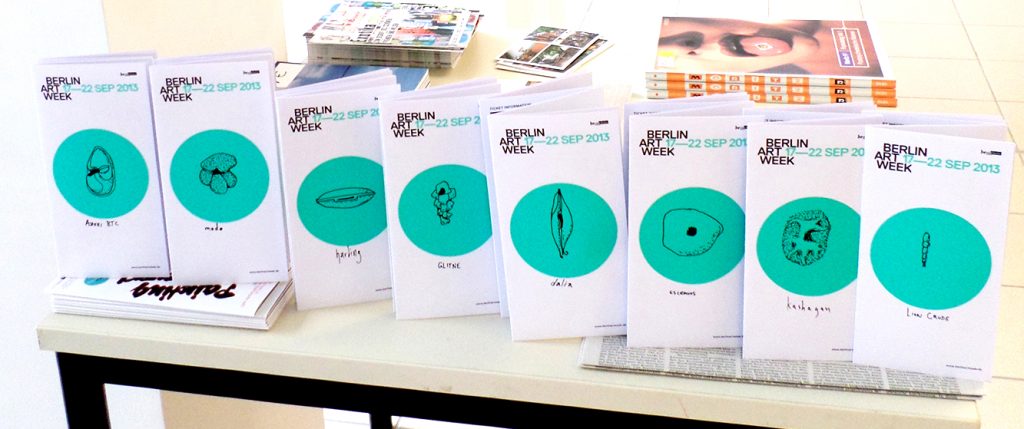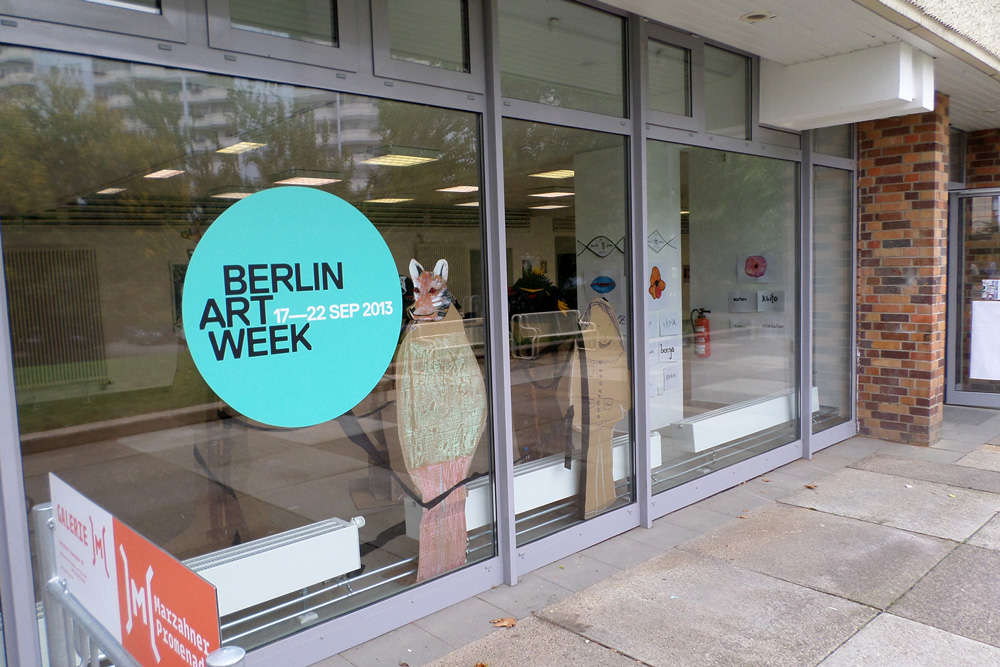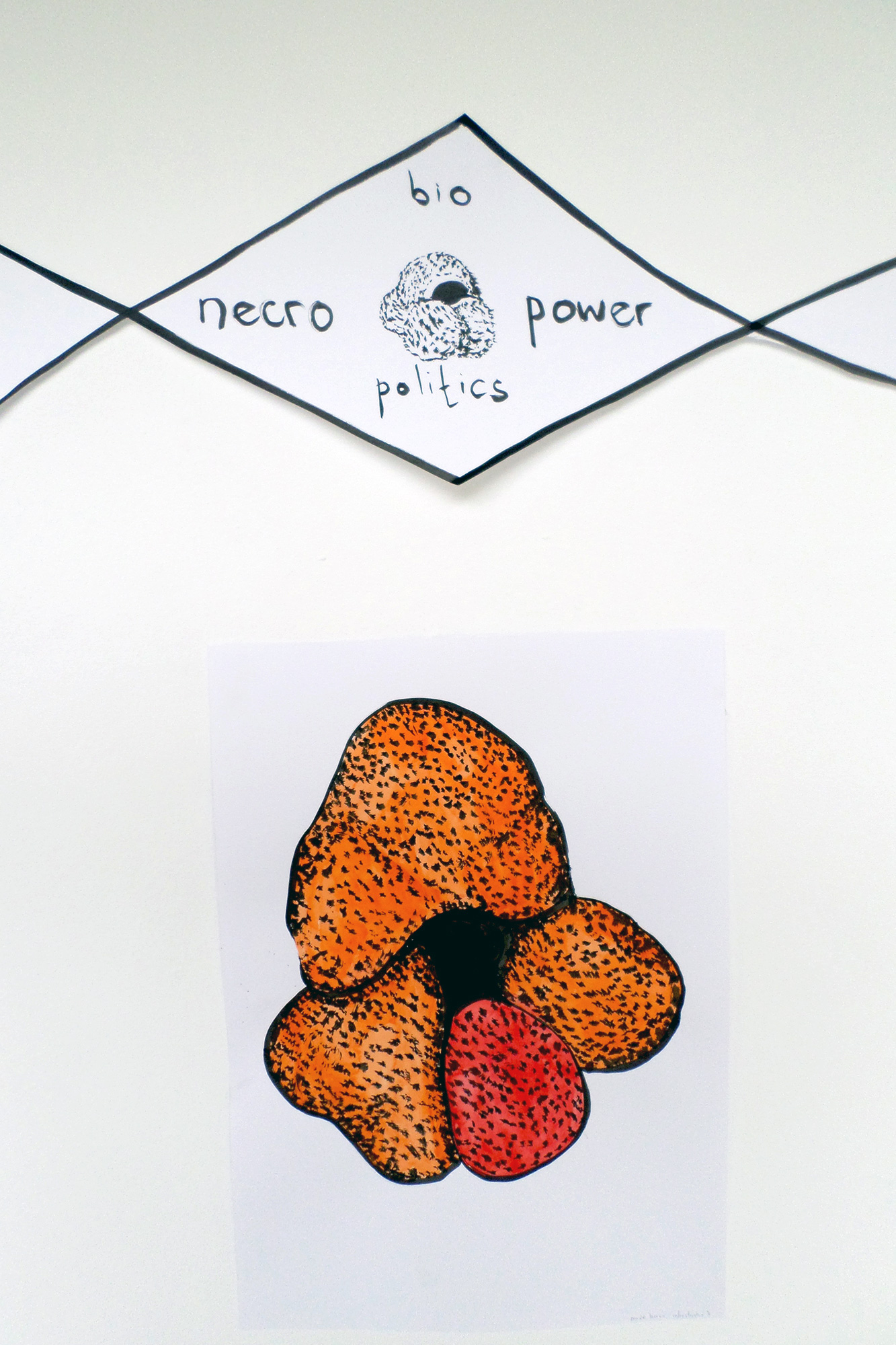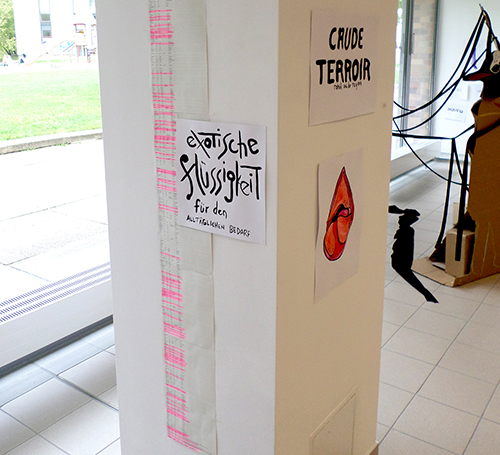Crude Terroir: Exotic Fluids for Everyday Desires
Crude Terroir: Exotic Fluids for Everyday Desires.
Exotika 2013. Galerie M. Berlin, Germany.
15 September- 1 November, 2013.
http://exotika2013.de/category/galerie-m/
http://exotika2013.de/author/duskindrum/
Crude Terroir: Exotic Fluids For Everyday Desires was shown in Berlin at the Gallarie M in Marzahn. It was part of a group show called Exotika 2013 organized by Alfred Banze and Christine Falk. The Exotika 2013 show became one of many side shows in the Berlin Art Week. Crude Terror was mostly composed from two main elements; first, the oil trade names or petrochemical assay names of specific crude petroleum products and second, images of microfossils found in crude petroleum. Exotika 2013 was split between two galleries, the “M” in Marszahn and Galarie Nord. The main installation of Crude Terroir was at Galarie M with a small supporting, or teaser, installation at Galarie Nord. The main installation element consisted of five black ink and bright watercolor paintings of petroleum microfossils on A3 (16.5″ X 11.4″) paper. The fossils were copied from electron scanning microscope photos and drawings. I painted them accentuating the curves and shadows that might to draw out associations with the erotic aesthetics of hips, asses, assholes, breasts, penises, lips and labia. Each large microfossil outline, texture, and shadow was painted in ink while the body was painted in a single bright watercolor.
Beneath the paintings were taped grids of letter size (8.5″X 11″) paper with creative and kitschy calligraphy names of crude petroleum products like “Beatrice,” “Sukol,” “Kizomba.” The installation was in the front window of the gallery occupying four sides of a column and the walls perpendicular to the window at each end. Eventually, cardboard cut-out figures from a related performance stood in a circle on the floor in front of the window. The column was the center of the Crude Terroir piece. The side of the column facing into the main gallery had a red/pink microfossil painting (A3) below a hand inked A3 label saying “Crude Terroir: rohöl aus der region.” The side of the column to its left, had a written sign, “exotische flussigleit für den ALLTAGLICHEN BEDARF.” This was meant to be a translation of “exotic fluids for everyday life” but maybe came out more like “exotic fluids for daily necessities.” To the left of the sign was a printed out list with many lines highlighted in pink running about six feet up the column on a strip of letter printer paper. The list was an almost comprehensive list of crude petroleum products; different crudes from different places. The highlighted names were those that my research linked to the refineries that supply the Berlin region. In other words, the specific crude that might be moving and enacting Berlin. The painted calligraphy crude product names on the other walls below the four other microfossils were all those varieties that might be in the Berlin oil supply.
The name “crude terroir” was inspired by the list of crude products. The names are often linked to geographic or culturally specific names from the places where the crude is extracted. Terroir, related to terra, soil and territory, comes from French winemaking to refer to the specific taste in wine imparted on the grapes from particular regional soils and growing conditions (OED). The word expands to become part of legal regulations of regional labeling. But read quickly next to the word “crude,” terroir easily visually associates with “terror.” The idea with the title is to suggest each name indexes the particular violences required to produce each crude product. The crude products list catalogs the distributions and locations of the productive/extractive pieces of petrochemical infrastructure that reinforce and perform social injustices. For example; the terroir of Oriente and Napo Crudes include the poisoning of the water and contamination of soils (Sawyer 2004), the struggles of people of the Niger Delta are inscribed into Okono and Odudu Crudes (Watts 2004), and the United States government’s war on the Iraqi people in every barrel of Basrah Light.
Terroir matters to the oil companies in terms of the chemical assays, or tests, of the crude. The list taped to the wall exists because each crude petroleum is chemically distinct due to its formation by distinct geological pressures on distinct biotic communities. The microfossils in crude are evidence of these distinct biotic communities. Unfortunately, the industry assays do not test for microfossil. Crudes are tested for a number of factors that effect transportation, refinery-crude compatibility, and product yields. Most commonly listed petroleum assays test are; density or specific gravity which ranges from tar (teens) to light condonsates (fifties), and sulfur (sweet or sour) content which makes crude more expensive to refine. The petroleum assay is a technique that establishes a global metrological zone, shared measurements that enact a standardized relationship between oil extraction, shipping, and refining (Barry 2006).
The grids of calligraphic crude terroir, assay, or product names was inspired by a James Joyce story titled “Araby” from Dubliners. The narrator, a lusty lad, seeks some normative orientalist fantasy in the name Araby, a bazaar his imagined object of desire wished she could have gone to. Perhaps a story about exotic names and their play erotic desires. But, as such, it may be read as a story of consuming others out of wounded narcissistic pleasure. The inspiration was vague and associative; I had not read the story since my first year of college. But somehow it wound into the venom stimulated by both petroleum and the curatorial vision of Exotika 2013.
Matching the exotic names of the crude products to the sexy paintings of petroleum microfossils attempts to seduce affective attachments between the pleasures capacitated by petroleum and the terror produced in oil production. The performance works partially through mystery and revel by tracing an obvious set of petroleum relations but displaying them in a way that the realization and sensualization is performed by the audience. (I hope). The work was guided by thinking, “what is obvious art about crude petroleum? What would anyone make?” The images of microfossils are mostly foraminifera, shelled micro-organisms found commonly throughout the ocean and other waters. Ironically, some foraminifera are currently suffering impeded shell formation from ocean acidification caused by the ocean absorbing carbon dioxide excesses of industrial combustion of fossil fuels. The large bright paintings of the foraminifera intend to be uncanny drawing out formal resemblances to human body parts.
But, for me, they also weirdly changed my reaction to a certain proposal about petroleum and global warming I had rejected out of hand. My brother, Bochay Drum, has for years seriously chided me with the suggestion that petroleum wants to burn. That the explosive energetic seduction of combustion with oxygen is desire. Mammal metabolism can also be describe in terms of a slow oxygen burn. This line of thinking is the scary of thinking the ontologically flat post-human exceptionalism with new vitalisms, object oriented ontology, and actor-networks (Bennett 2010; Morton 2013; Latour 2013).
As part of Crude Terroir, I hand drew on hundreds of Berlin Art Week flyers petroleum microfossils and labeled them with petroleum terroir names. The flyers were standard tri-folds with a blue green circle on the front. I draw in the circles. I took these modified flyers and inserted them in the piles of materials promoting Artweek across Berlin. This made an almost Brechtian gesture toward describing, labeling the Berlin Artweek as petroculture in its enactment, composition, and goals.







